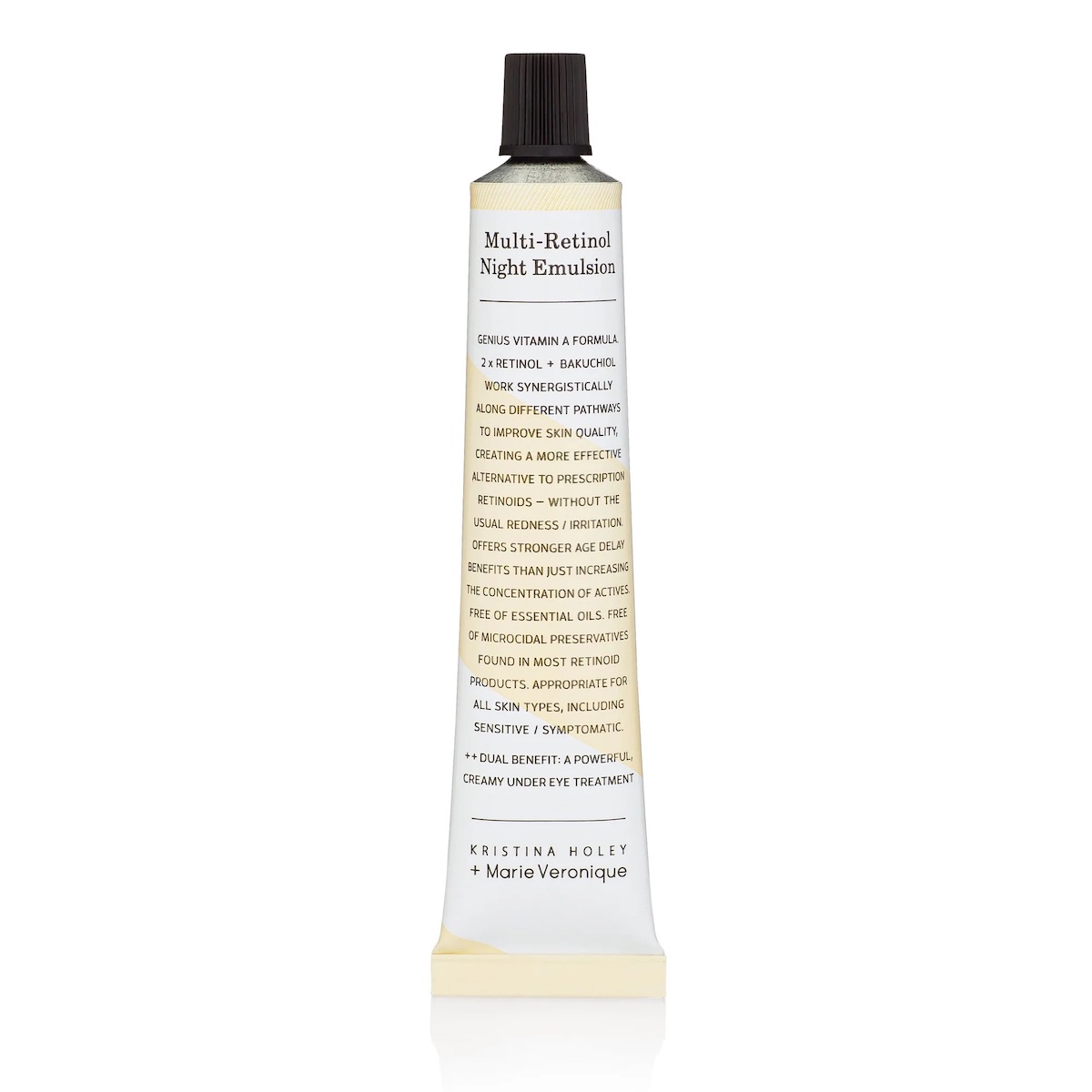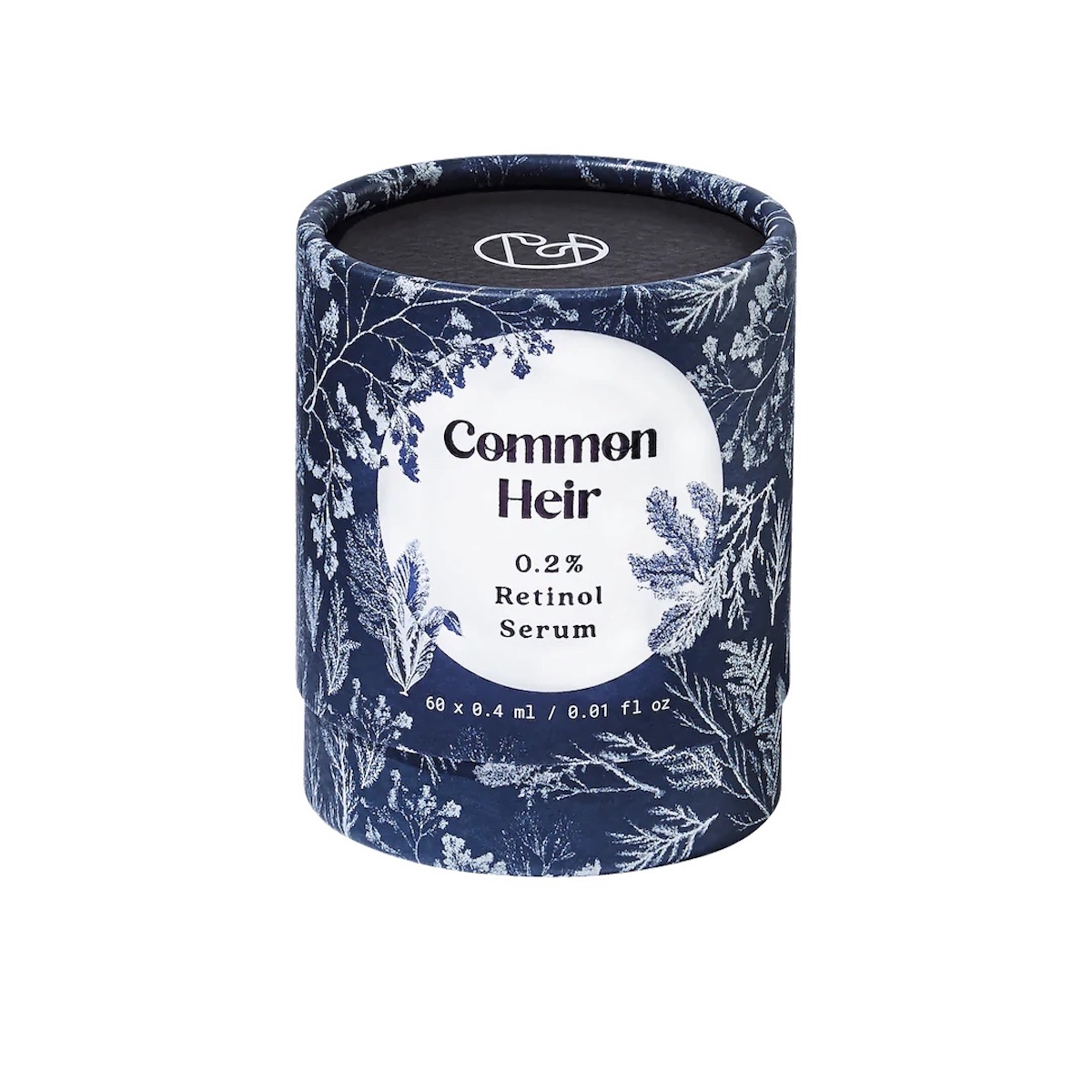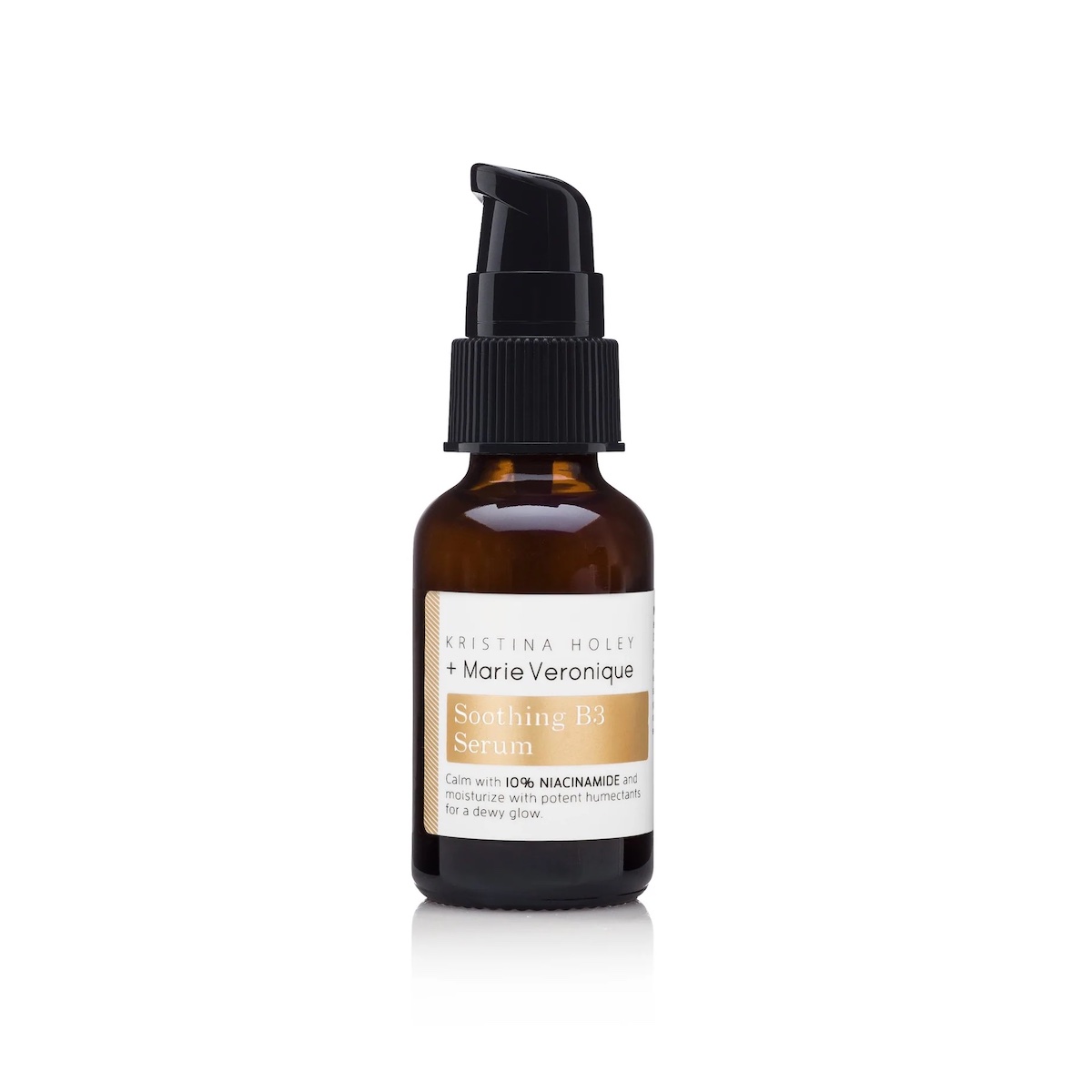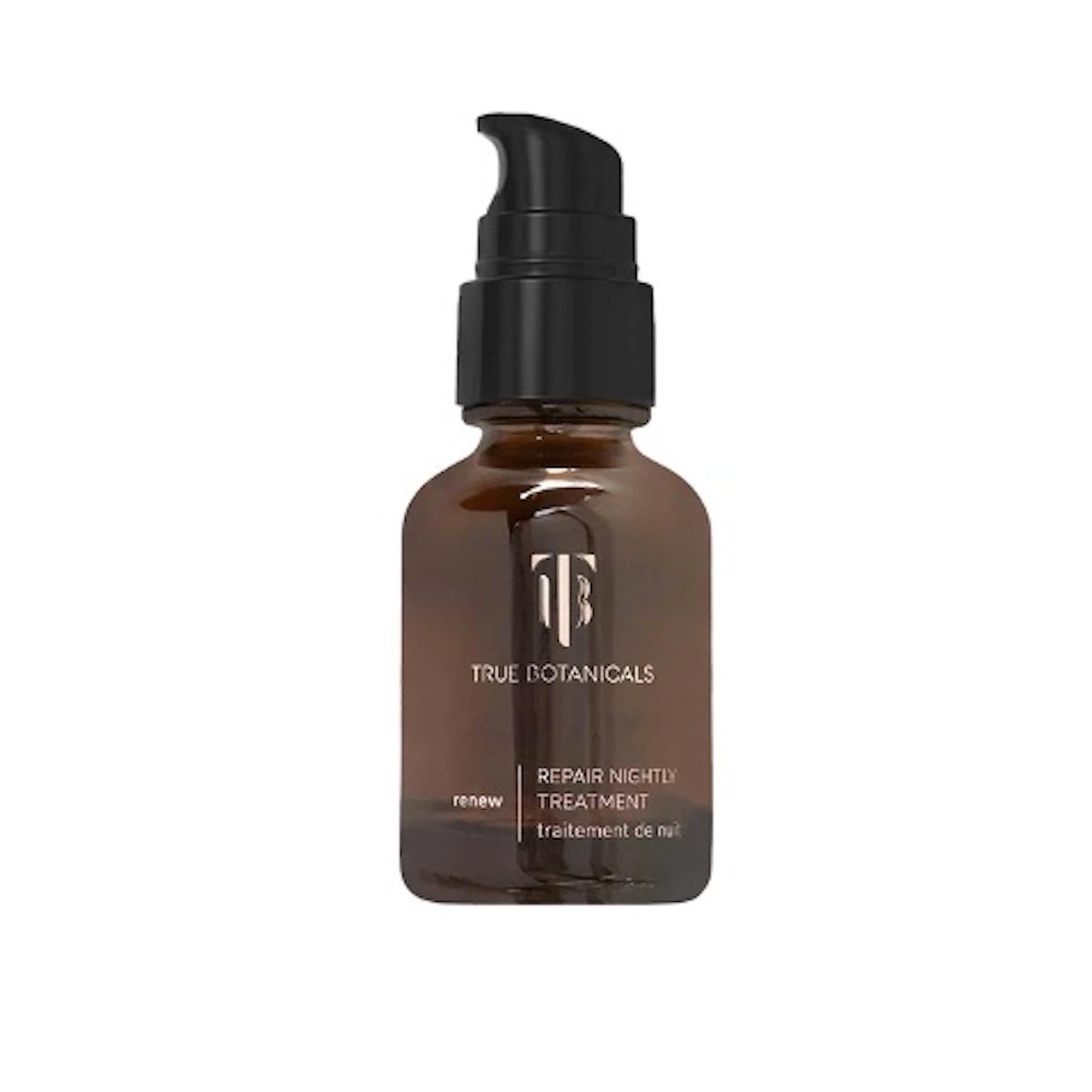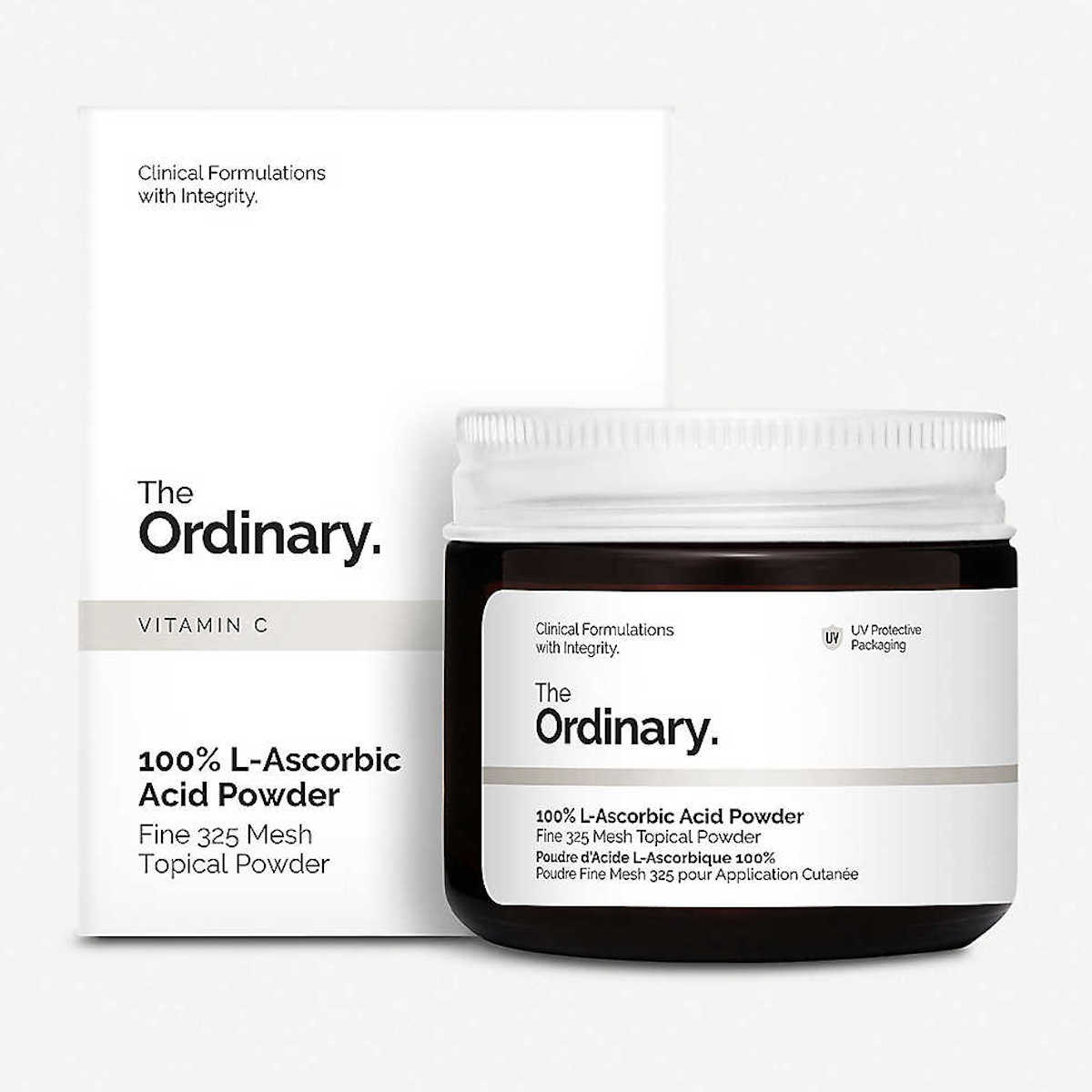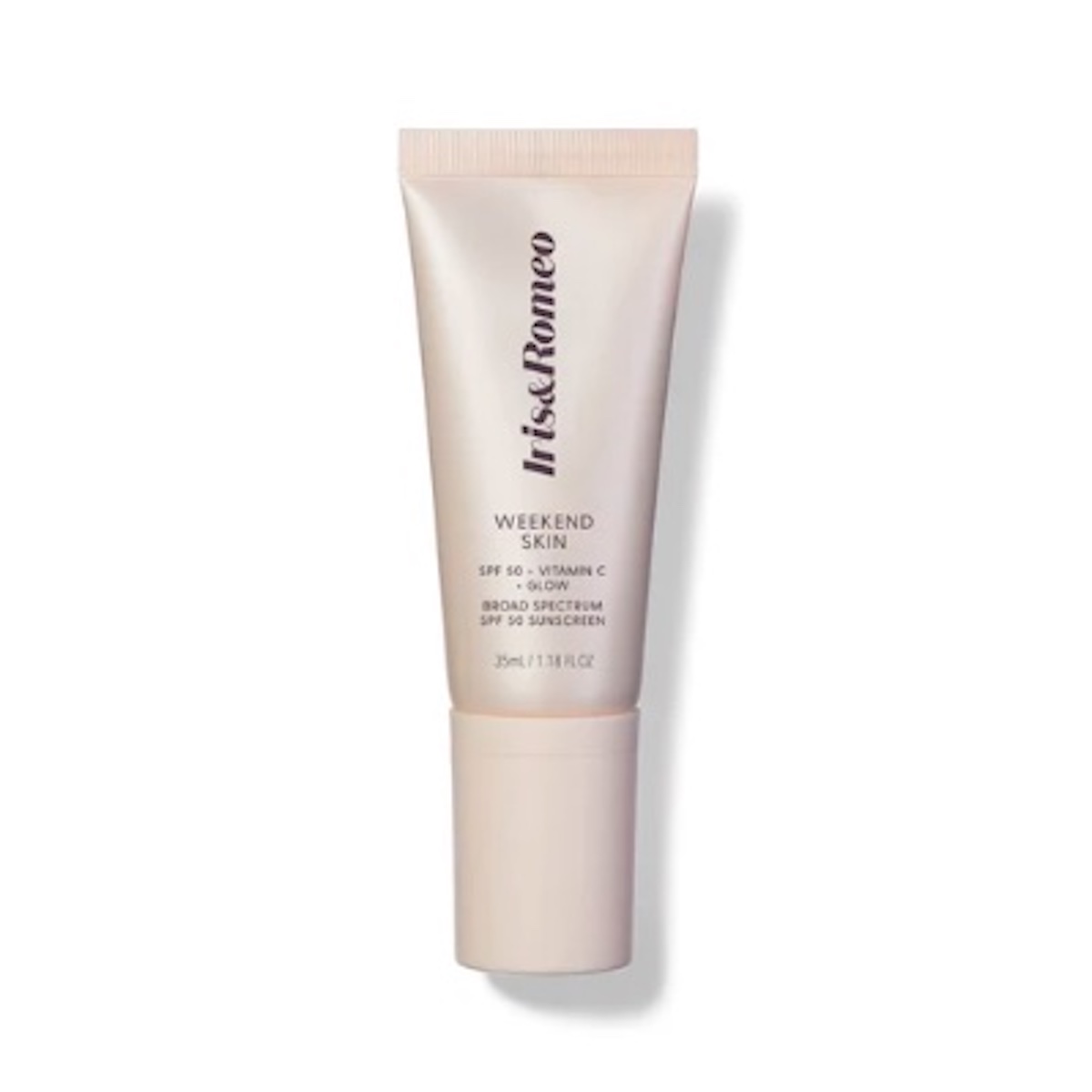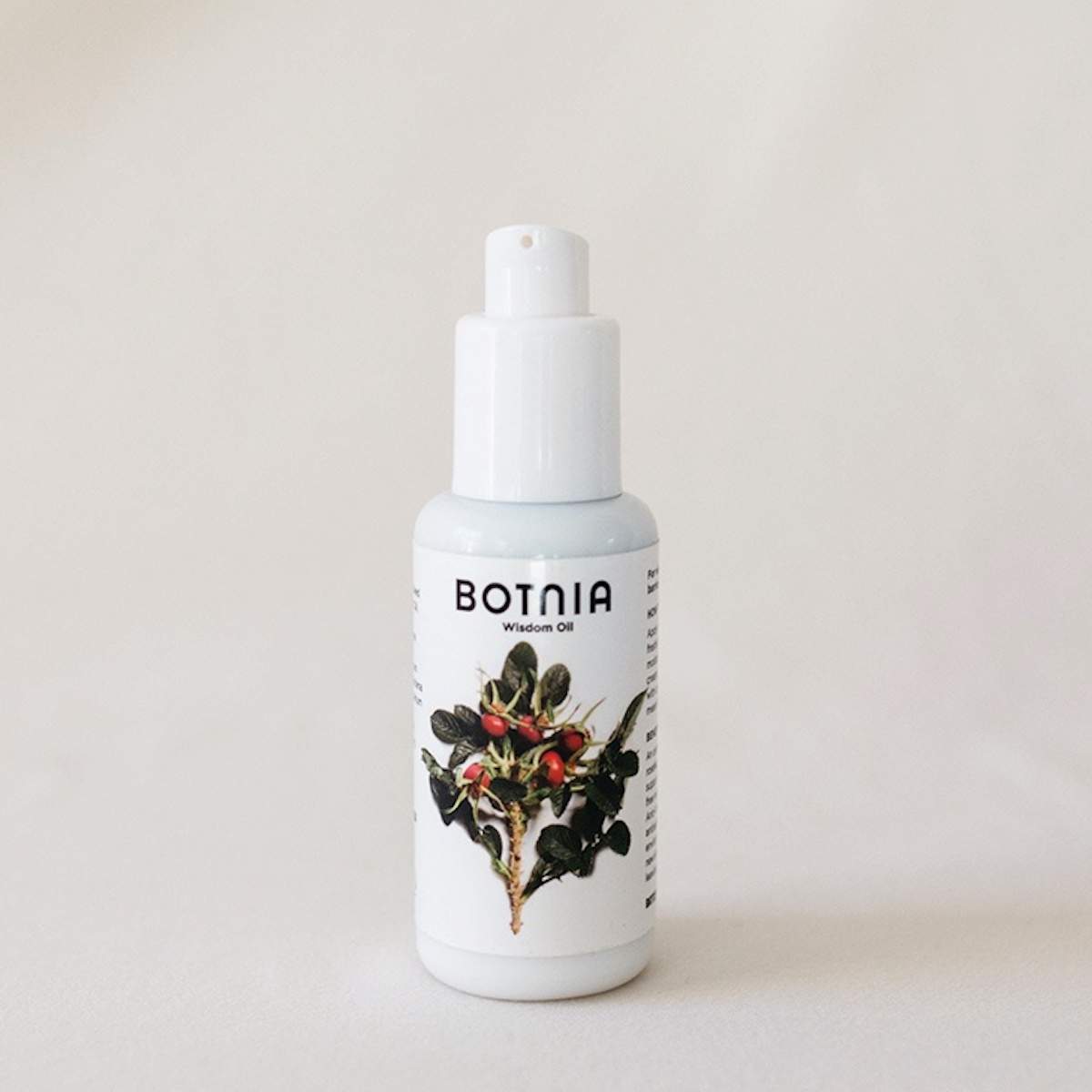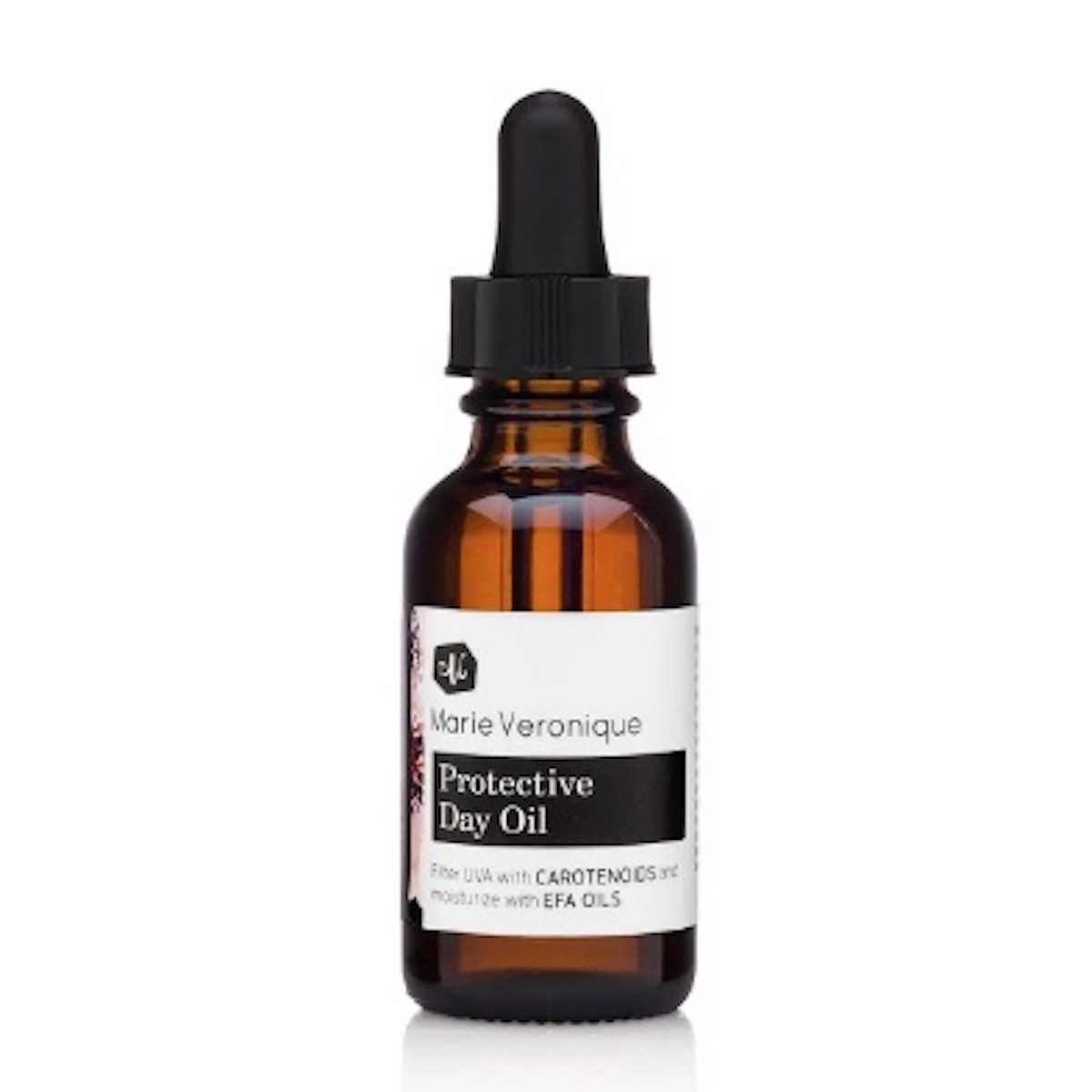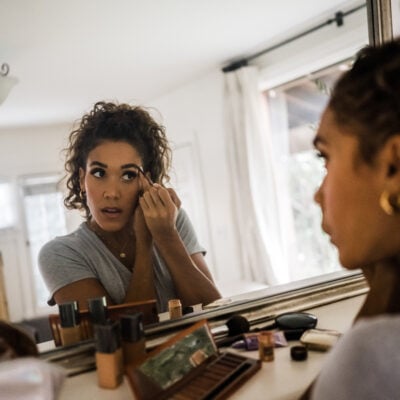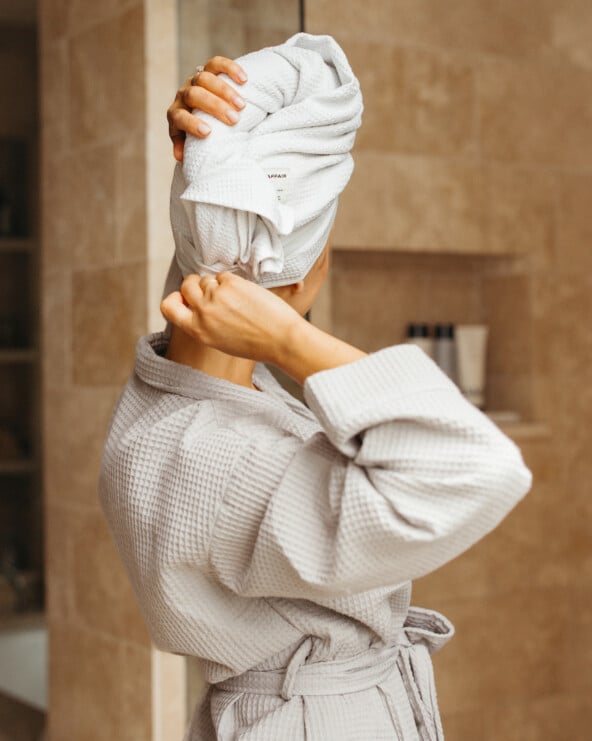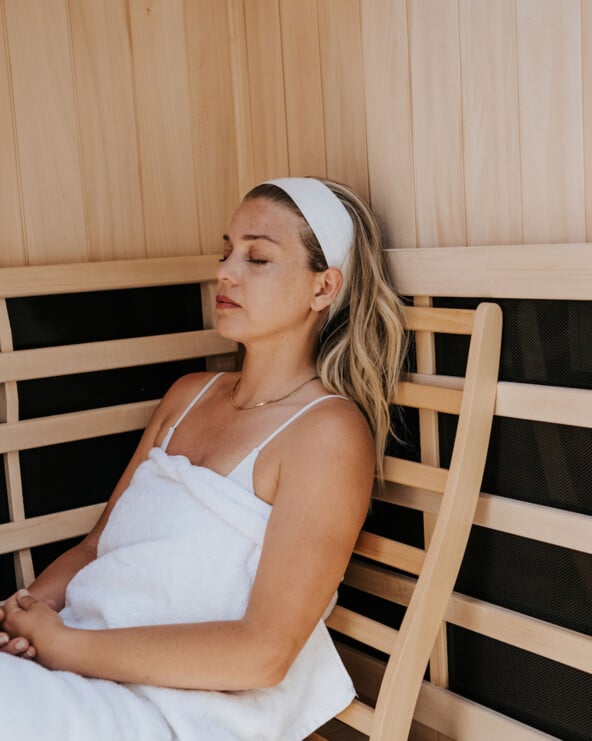The first time I noticed them was after a night out. I had just gotten home, giggly from drinking wine with friends. When I looked into the mirror to take off my makeup, there they were: two fine lines running across my forehead. I leaned in to get a closer look. Yep, the thin channels of expression were claiming their existence. I dropped what I was doing and googled the best anti-aging skincare products for forties skin immediately.
At the time, I was in my late thirties, which is when we start to see a shift in our skin, says holistic skin care specialist Kristina Holey. Essential factors like circulation, nutrient delivery, and tissue repair begin to slow down, as does collagen and elastin production. And fine lines and years of sun damage begin to rear their heads.
Feature image by Riley Reed.

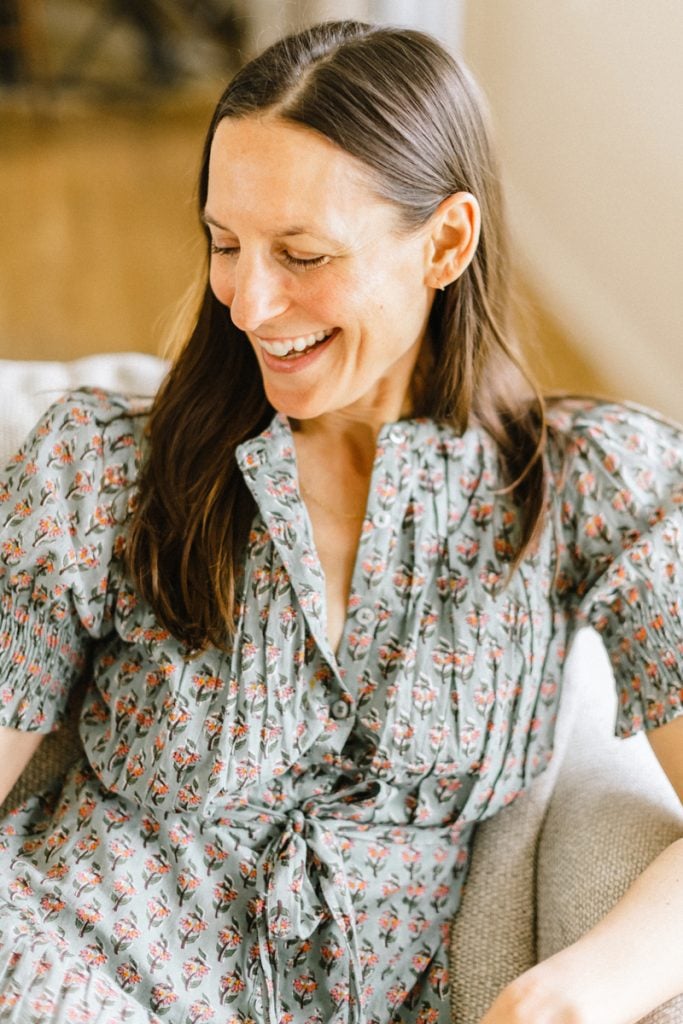
If you’re like me and about the same age, you’ll sigh at this. But in truth, our maturing skin is no reason to get down. On the contrary, it’s an invitation to evaluate how we care for it. As Holey says, it requires a more thoughtful, efficacious regimen to build a healthy system. Hence, way more than a quick ‘best anti-aging skin care products for forties’ google search.
Now in my forties, I realize I want to take care of my skin the right way—which means understanding why it’s changing and what it needs. That’s why I reached out to Holey, who is known coast-to-coast as the best for teaching both how the skin works and what makes it thrive. Rather than finding a quick fix (which doesn’t exist!), I dived deep into learning what happens to skin post-40 and the best nutrients to keep it supple, healthy, and glowing.

Kristina Holey is a holistic skin specialist who is dedicated to furthering the understanding of the skin and its relationship to the rest of the body. A scientist by trade, Kristina applies an experimental approach to both skin treatment and product development. She received her bachelor’s degree in engineering and later pivoted to cosmetic chemistry, studying at the ISIPCA (Institut Supérieur International des Parfums, Cosmétiques et Arômes Alimentaires), one of the world’s most prestigious fragrance and cosmetics schools.
Forties Skin: What Happens
In our twenties and early thirties, the “system” of our skin is functioning well, Holey tells me. The natural processes of repair and healthy cell production are “working on a pretty good schedule,” bar if you have any major nutritional deficiencies. Essentially, “less is more” when it comes to skincare during these years.
The shift in our skin really begins to happen around 35, says Holey. This is when we start to see:
- A decline in circulation and nutrient delivery.
- A slowing down of cellular turnover.
- A decrease in the production of collagen and elastin.
- Visible expression lines, which are linked to a decline in ATP production, an organic compound the body uses for energy. (As Holey says, “we require ATP and cellular energy to move our muscles to make more collagen.”)
- More signs of accumulated damage from free radicals, UV rays, pollution, chemicals, and internal body issues, all of which trigger inflammatory cascade and break down skin structure.
These factors require dedicated and efficacious care to build and maintain a healthy skin system. “At the 35 to 40 marker, it switches from less is more to more is more,” says Holey of our skincare needs.


Forties Skincare: All About Micronutrients
I admit, the above is a lot to swallow. But allow Holey to swoop in with her positive skin wisdom: With essential micronutrients that work synergistically, you can replenish the skin and build a healthy foundation. “From a skincare perspective, you want to think, How do I compensate for all these inevitable changes? And how do I try to prolong the lifespan of these fibroblasts, make the cells communicate, and make the system run smoothly?”
This, continues Holey, includes the following “priority ingredients.” Each micronutrient speaks to the next, creating a skincare system that encourages healthy cellular communication—resulting in glowing skin, 40 and beyond.

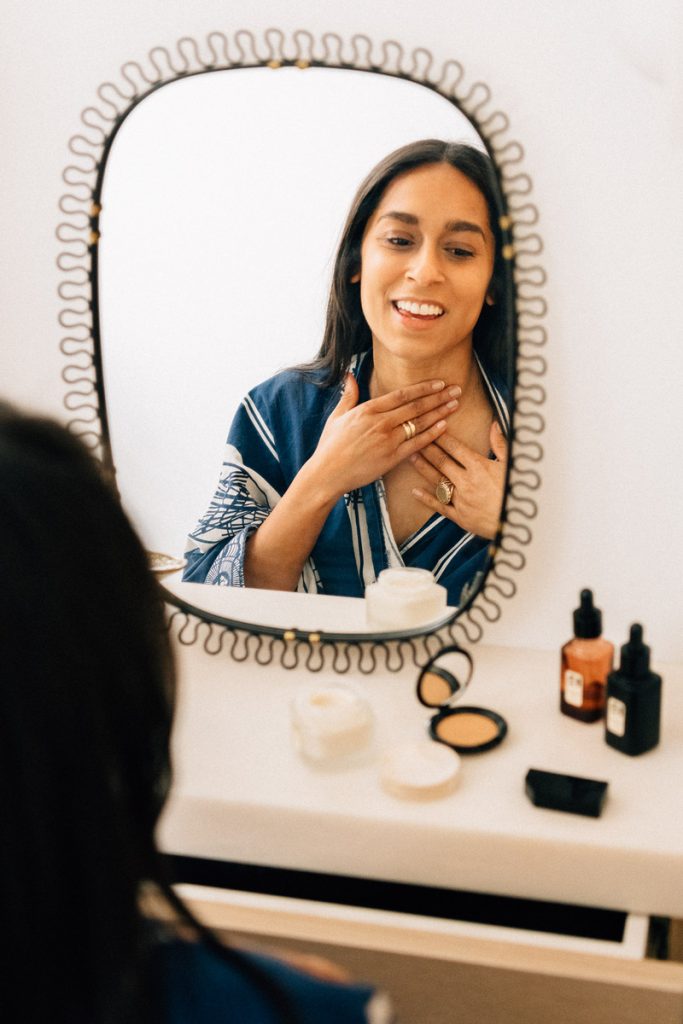
Retinol (Vitamin A)
Vitamin A does many things, which is why Holey calls it a “no-brainer” ingredient when it comes to forties skin care. It works to stimulate skin fibroblasts and stimulates collagen. It also clears out damaged cells so there’s room for new healthy skin cells. “For UV damage, photo damage, and damage from previous inflammatory cascades, retinols are the best ingredient to really repair from the ground up,” she adds.
Marie Veronique Multi-Night Retinol Emulsion
Niacinamide (Vitamin B3)
This powerhouse ingredient is an antioxidant that helps with deep-down skin actions that require energy. Niacinamide, in essence, scavenges any byproduct. It also helps to reduce inflammation and redness and helps with barrier function. “At the deep level, it’s one of those magical ingredients,” says Holey.
Marie Veronique Soothing B3 Complex
True Botanicals Repair Nightly Treatment
Vitamin C
Another “no brainer,” says Holey. “You can’t produce collagen if you don’t have vitamin C,” she adds. Plus, since we don’t make vitamin C ourselves, we need it from external sources—and it’s required for so many different processes in the body, including anything immune-related. Vitamin C also works to maximize sun protection. [Note: Be sure to test vitamin C as certain varieties may be too strong for certain skin]
The Ordinary 100% L-Ascorbic Acid Powder
“In order to have healthy skin, you must have healthy cellular communication.” —Kristina Holey
Essential Fatty Acids
As we age, our skin makes less oil. For this reason, Holey says it’s important to supplement with essential fatty acids. This helps to seal and protect the skin and nourish with ceramides, which are important for replenishing lipids and cholesterols and supporting moisture balance.
Marie Veronique Protective Day Oil



